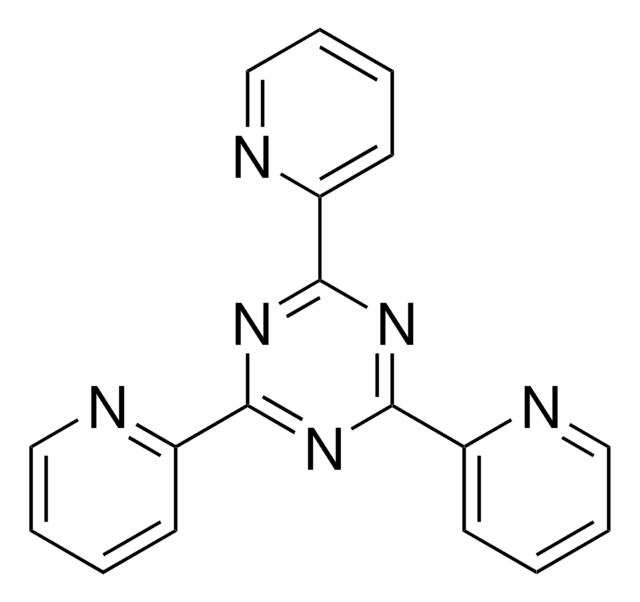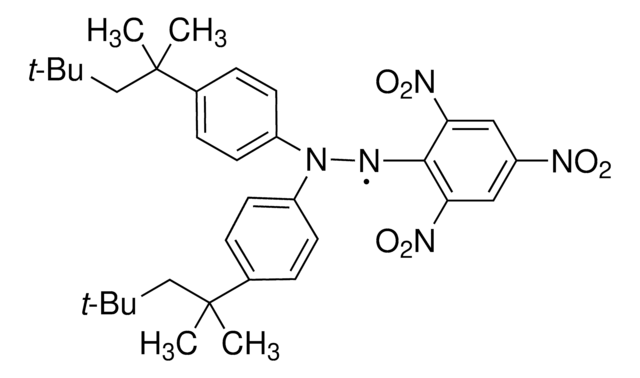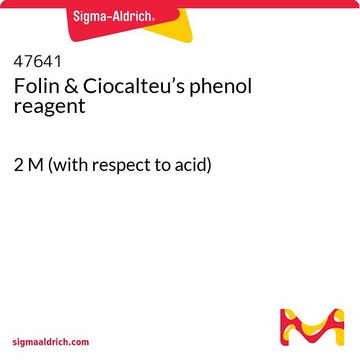D9132
2,2-Diphenyl-1-picrylhydrazyl
Synonym(s):
1,1-Diphenyl-2-picrylhydrazyl radical, 2,2-Diphenyl-1-(2,4,6-trinitrophenyl)hydrazyl, DPPH
About This Item
Recommended Products
form
powder
Quality Level
color
green
mp
~135 °C (dec.) (lit.)
storage temp.
2-8°C
SMILES string
[O-][N+](=O)c1cc(c([N]N(c2ccccc2)c3ccccc3)c(c1)[N+]([O-])=O)[N+]([O-])=O
InChI
1S/C18H12N5O6/c24-21(25)15-11-16(22(26)27)18(17(12-15)23(28)29)19-20(13-7-3-1-4-8-13)14-9-5-2-6-10-14/h1-12H
InChI key
HHEAADYXPMHMCT-UHFFFAOYSA-N
Looking for similar products? Visit Product Comparison Guide
General description
Application
- Stable p-radical 2,2-diphenyl-1-picrylhydrazyl (DPPH) adsorbed at the elbows of 22×3 reconstructed Au (111): This study focuses on the single-molecule level investigation of the stable organic radical DPPH, exploring its adsorption and interaction characteristics on a gold surface, which is crucial for understanding metal-free magnetic phenomena at subnanometer scales (R Vranik et al., 2020).
Other Notes
related product
Signal Word
Danger
Hazard Statements
Precautionary Statements
Hazard Classifications
Acute Tox. 4 Dermal - Acute Tox. 4 Inhalation - Acute Tox. 4 Oral - Eye Irrit. 2 - Resp. Sens. 1 - Self-react. C - Skin Irrit. 2 - Skin Sens. 1
Storage Class Code
4.1A - Other explosive hazardous materials
WGK
WGK 1
Flash Point(F)
Not applicable
Flash Point(C)
Not applicable
Regulatory Listings
Regulatory Listings are mainly provided for chemical products. Only limited information can be provided here for non-chemical products. No entry means none of the components are listed. It is the user’s obligation to ensure the safe and legal use of the product.
FSL
Group 5: Self-reactive substances
Nitro compounds
Hazardous rank I
1st self-reactive materials
JAN Code
D9132-250MG:
D9132-VAR:
D9132-BULK:
D9132-1G:
D9132-5G:
Choose from one of the most recent versions:
Already Own This Product?
Find documentation for the products that you have recently purchased in the Document Library.
Customers Also Viewed
Our team of scientists has experience in all areas of research including Life Science, Material Science, Chemical Synthesis, Chromatography, Analytical and many others.
Contact Technical Service












